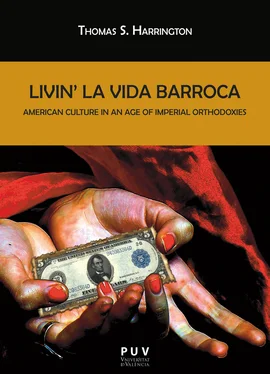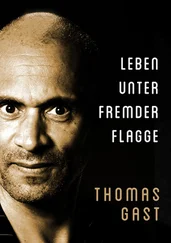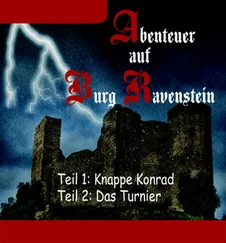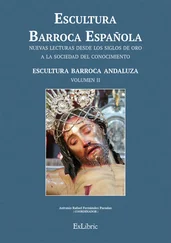When most Americans think of the Baroque it is probably an association with French music or Latin American architecture. It is certainly not inaccurate to do so. But it is important to remember that the Baroque was, and is, much more than this.
The term has its roots in the Iberian Peninsula of the late 16th and 17th centuries, a time when Spanish and Portuguese empires were both hugely important and visibly decadent. In the late 15th and early 16th centuries these two relatively underpopulated an unsophisticated kingdoms had leapt to world prominence on the basis of their ferocity (honed in the centuries-long frontier struggle against the Muslim “heathen”) and their precocious understanding of naval technology. Between 1470 and 1550 these came to control much of Africa, all of Central and South America, and substantial pieces of Europe (much of southern Italy, the Low Countries and a good part of today’s Germany and Austria). But no sooner did they establish control of these places then, as could be expected, resistance to their rule began to grow.
In the Americas, the Iberians’ relative military and naval superiority allowed them to overwhelm the opposition until the beginning of the 19th century. In Europe, however, things were far more complicated.
There, especially in the lands of northern and central Europe, the opposition to Iberian rule was not only military, but also ideological. The Reformation, which we now tend to think of in almost wholly theological terms, was in fact a movement with an enormous geopolitical subtext. For the Dutch and for the Germans, becoming Protestant was not only a matter of talking more clearly and directly to God, but also ridding themselves of their Spanish overlords and their Italian ecclesiastical agents.
The Spaniards reacted to the challenge of the Reformation and its incipient embrace of empiricism, by instituting the Counter-Reformation, the upshot of which was an effort to repackage—but in no way fundamentally alter—the now time-worn tenets of their Church-centered philosophy of cultural hegemony. It was what we might call today a campaign of cultural “re-branding.” As such, it was largely circumscribed to the realm of the aesthetic.
This might have worked had the German and Dutch complaints with the Spanish been aesthetic. Rather, they were bound up in much more essential questions of dignity and self-determination. There thus ensued what the Spanish nowadays call a “dialogue of the deaf.” On one hand, we have the Spaniards and Portuguese (the kingdoms were united between 1580 and 1640), with their ostensibly sophisticated and worldly Jesuits at the fore, inventing new ways to sell old imperial and theological wine. On the other, we have the rebel elites of Holland and numerous German kingdoms who had long-since decided that their social and commercial dreams could never realized within the framework of a Catholic empire led from Madrid.
Unable to entertain, never mind admit, the validity of the ideological or territorial claims of their unruly northern subjects, the Spanish Hapsburgs and their official creators did what all frustrated ideologues do in times of crisis: they pumped up the volume. It is in this act of historical desperation that we find the core logic of the Baroque. “If only we can say it more colorfully, more artistically, more ingeniously we will win them back.”
But of course, with the intended Northern audience long since inured to the siren song of the South, the only people left to listen to the ever more extravagant claims of cultural superiority were the captive citizens of the Iberian Peninsula itself! And so it was.
From the 1580s onward, precisely the moment when the first cracks in the façade of the omnipotent empire began to show, the Spanish political and intellectual class plied the populace with an unremitting diet of selfaggrandizement, punctuated only by the lacerating ironies of Miguel de Cervantes. This constant stream of church-state propaganda kept viceroys and their armies well-motivated for a good long time. But it did nothing to prepare Spain for the challenges of modernity. Indeed, the implied demand that even the best Spanish thinkers work and create within the ever more narrow alleys of patriotic and theological self-affirmation (as opposed to the expansive fields of free inquiry), virtually assured the country’s relegation to the dustbin of history.
There was a time in the not very distant past when the US leadership class believed the essential vitality of the US cultural political heritage. But judging from the design of my child’s new passport, they no longer trust in its ability to speak for itself. It appears we too are now denizens of the new Baroque, destined, like the Spaniards before us, to live out our decline in a propagandistic netherworld designed (so they tell us) for the benefit of others.
12 August 2008
Who’s Gonna Tell the Kids?
Who is going to fill the American people in on the truth and significance of what’s going on in Georgia? From all indications, no onein the national press corps is up for the job.
The op-ed fraternity, dutifully echoing the Bush administration, is running with a narrative that goes something like this: Georgia, led by an urbane young man (Saakashvili) who seeks nothing more than peace and prosperity for his plucky little nation, has been brutally attacked by a Russian bear bent on meting out wanton destruction. The reporter class, ever attentive to their appointed task of providing evocative vignettes and images to justify the storylines dreamed up by their superiors (a group that includes the aforementioned pundits as well as “government officials” and serious-appearing right wing think tank hacks), has gone about their task with the brainless dedication we’ve come to expect from them. Now its time for Americans to do what most of them believe (in the face of abundant statistical evidence to the contrary) they do best: provide the poor and besieged around the world with “humanitarian aid.”
In a functioning democracy with a more or less empirically-based media system, this little bedtime story would be quickly superseded by real reportage, and from there, a mainstream narrative that would go something like this.
In the wake of September 11, Cheney and the neocons at the White House decided they would use the crisis as a pretext for implanting US bases throughout the “new” republics of the Caucasus and Central Asia. The strategic intent of this move, accomplished largely through the buying off of corrupt dictators, was twofold. a) To project US military power into a region of enormous and still relatively untapped mineral wealth. b) Continue the process, begun in the late 1990s with the rapid eastward expansion of NATO, of militarily encircling Russia so that it would never again be able to seriously challenge US hegemony in the world. An integral element of this strategy was using the CIA and other US government funded agencies to catapult US-friendly “democrats,” such as the Columbia-trained yuppie, Saakashvili, to power in the satellite Republics of the former Soviet Union. And as is the custom with this particular White House crowd, they made sure that the Israelis were deeply involved with their covert operatives at every level of this strategic effort.
Putin, it appears, was fully aware of this neo-con agenda from the beginning. And as a keen reader of human psychology, he also understood the fundamentally priapic character of its key architects. You can’t keep a hard-on forever, he reasoned, especially when you are trying to stick it in every available strategic “orifice” between Ankara and Indonesia. And so he watched and waited, playing Rope-a-Dope with the US for seven long years.
Like many members of the US neo-con fraternity that invented him, and has sustained him up until now, Saakashvili appears to be long on swagger and short on smarts. And as has occurred with many foolish CIA assets in the past, he apparently began to see himself through the hagiographic prism of the propaganda his handlers regularly churned out on his behalf. No doubt remembering how the summer timing of Israel’s rape of Lebanon two years ago helped to cushion the public relations fall-out from the event, Handler and Asset apparently decided that now was the time to poke the Russian bear in the eye. And so they planned a lightning strike to seize South Ossetia. Putin was ready. He came off the ropes and struck back with a clean and crisp left hook to the jaw that left the Asset (and by extension, his handlers) crumpled on the canvas. End of match.
Читать дальше












![Johann von Goethe - [Einleitung zu:] Thomas Carlyle, Leben Schillers](/books/747389/johann-von-goethe-einleitung-zu-thomas-carlyle-thumb.webp)